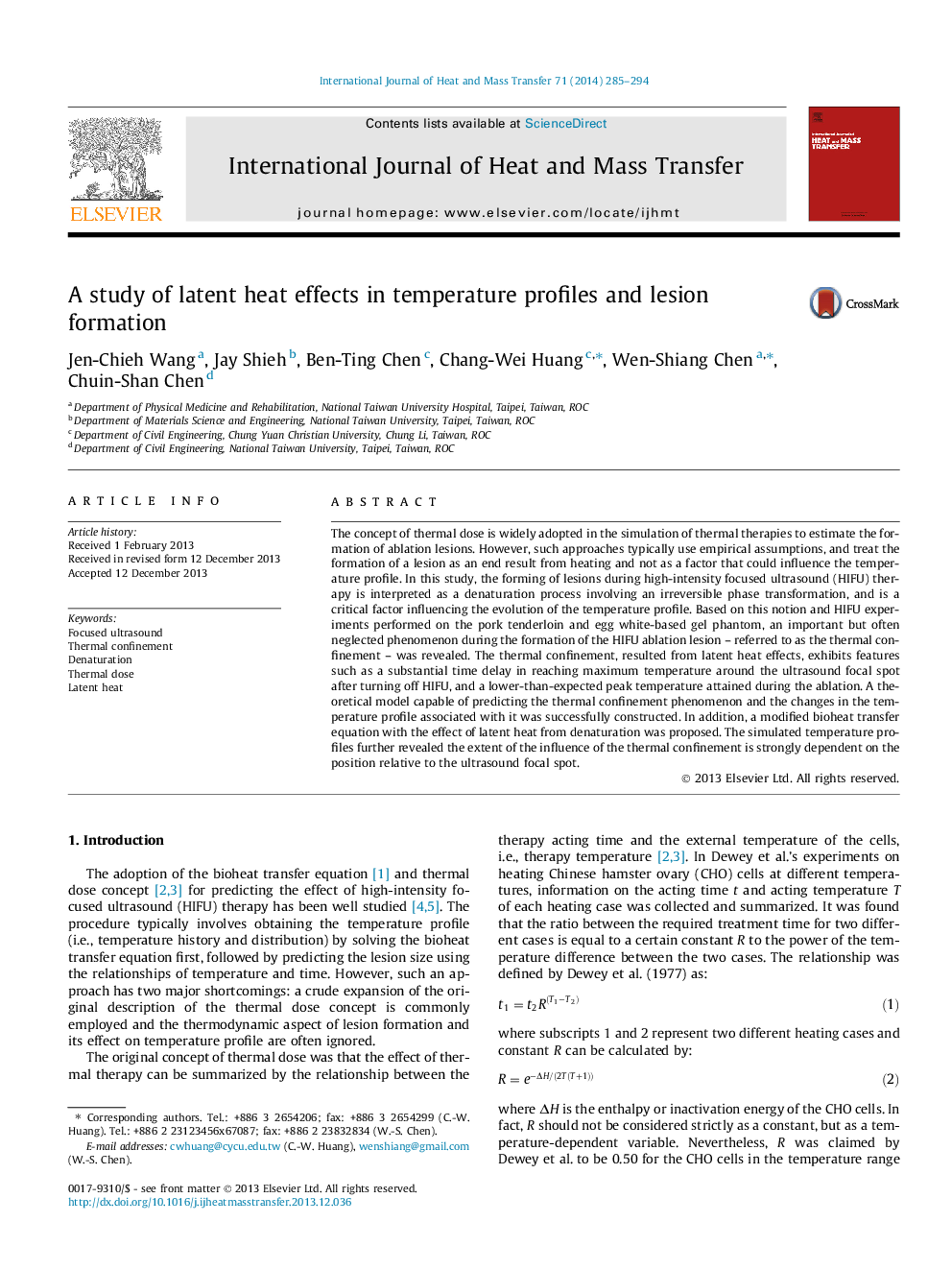| Article ID | Journal | Published Year | Pages | File Type |
|---|---|---|---|---|
| 7057585 | International Journal of Heat and Mass Transfer | 2014 | 10 Pages |
Abstract
The concept of thermal dose is widely adopted in the simulation of thermal therapies to estimate the formation of ablation lesions. However, such approaches typically use empirical assumptions, and treat the formation of a lesion as an end result from heating and not as a factor that could influence the temperature profile. In this study, the forming of lesions during high-intensity focused ultrasound (HIFU) therapy is interpreted as a denaturation process involving an irreversible phase transformation, and is a critical factor influencing the evolution of the temperature profile. Based on this notion and HIFU experiments performed on the pork tenderloin and egg white-based gel phantom, an important but often neglected phenomenon during the formation of the HIFU ablation lesion - referred to as the thermal confinement - was revealed. The thermal confinement, resulted from latent heat effects, exhibits features such as a substantial time delay in reaching maximum temperature around the ultrasound focal spot after turning off HIFU, and a lower-than-expected peak temperature attained during the ablation. A theoretical model capable of predicting the thermal confinement phenomenon and the changes in the temperature profile associated with it was successfully constructed. In addition, a modified bioheat transfer equation with the effect of latent heat from denaturation was proposed. The simulated temperature profiles further revealed the extent of the influence of the thermal confinement is strongly dependent on the position relative to the ultrasound focal spot.
Related Topics
Physical Sciences and Engineering
Chemical Engineering
Fluid Flow and Transfer Processes
Authors
Jen-Chieh Wang, Jay Shieh, Ben-Ting Chen, Chang-Wei Huang, Wen-Shiang Chen, Chuin-Shan Chen,
